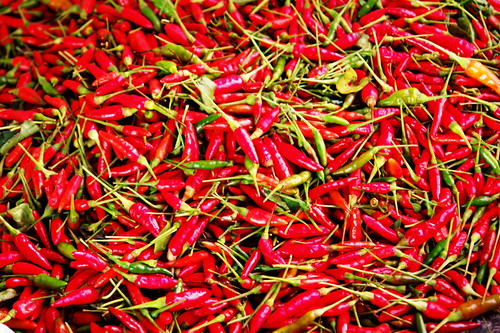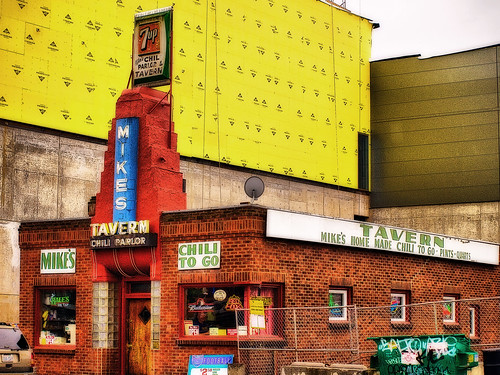The first component of this meal are Buckwheat Galettes with Ham and Cheese. I had a bit of difficulty making these "galettes" without them sticking to my pan. I finally switched to a non-stick pan and used non-stick spray as well, and was able to obtain some sort of results, but this one might take some practice. I managed to get two of them that worked well. The batter for the galettes consists of buckwheat flour, all-purpose flour, eggs, whole milk, salt and some roasted buckwheat groats, ground to a fine powder. After 2 hours in the fridge, the batter was a bit thicker then when it went in. I ladled a small amount of the batter into the well-oiled pan and spread it around, allowing it to brown on one side. With a spatula, I flipped it over and allowed it to brown on the second side as well. Once the galettes were cooked, I used some ham and grated gruyere cheese to layer one half of the galette, and flipped the other side over, like a quesadilla. I allowed them to heat in a 400 degree oven until the cheese was melted and the outsides were crispy.
The next component of this menu is a Mache Salad. I have seen mache rosettes in the grocery store in the past, but I couldn't find any today, so I opted for baby greens with herbs instead. To dress the greens, I used a mixture of diced shallots, sherry vinegar, red wine vinegar, salt, pepper, dijon mustard, olive oil, and walnut oil. The salad also had some crumbled hard-boiled egg in it, which was a really nice touch. This was the easiest of the components and the one that I completed first, so that it was done and out of the way.
Now, for the main course in this fabulous menu: Mussels Mariniere, Brittany-Style. In this recipe, butter is melted in a hot pan, and diced onions are added, allowing them to soften in the butter for about 5 minutes. Some salt, pepper, garlic cloves smashed into a paste with some salt, a thyme sprig, a bay leaf and 2 cups of dry white wine are added to the pan, and then the mussels are added as well. After about 10 minutes of allowing the mussels to steam, I threw in a large handful of parsley and mixed everything well. Dinner was finally ready!
While I was making all of the above, I was also working on the last two components of this dish...the dessert components. The Apple Compote was simple to make, and really delicious. I don't usually like applesauce but this was like nothing I've ever tasted before! Using only four ingredients (apples, sugar, a lemon slice, and water) made this a brilliant little gem that I will definitely be making again. The lemon slice really made this dish unique - the bit of tartness among all of the sweet was just pure yumminess.
Finally, I also made some dough for butter cookies! The dough had to sit in the refrigerator for an hour before I could safely slice it for baking, so I did that at the beginning of the process, right after making the galette batter. 2 sticks of butter (they are butter cookies, after all), sugar, egg yolks, salt, vanilla extract and flour made this crumbly cookie dough. I was able to make two logs of dough for the fridge so I saved one for later in the week. I did make about 16 cookies though, and enjoyed one with my apple compote. It was very sweet end to a truly delicious meal!













